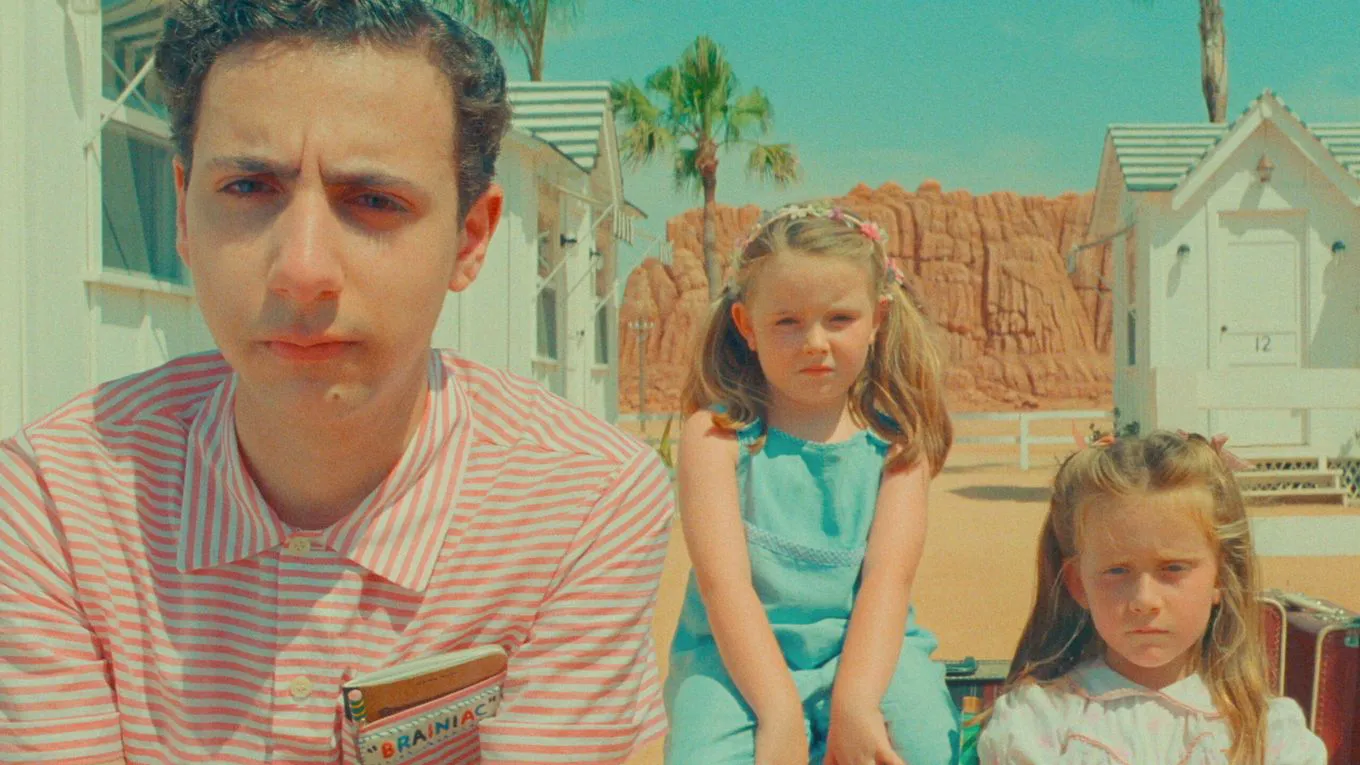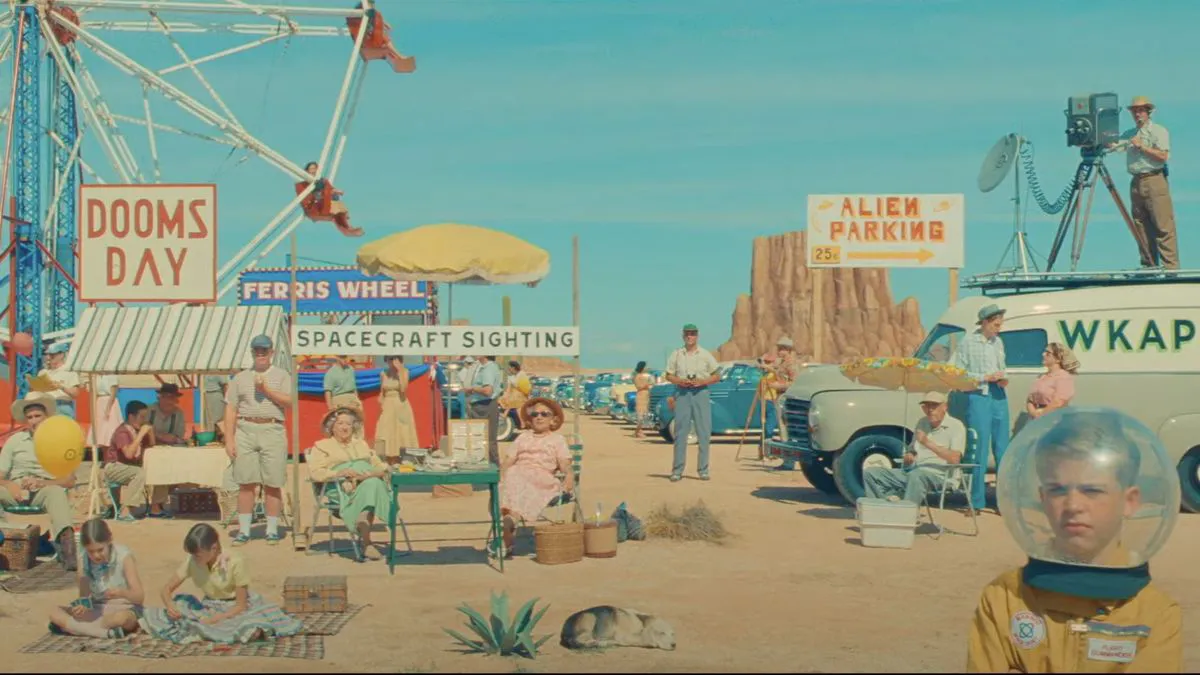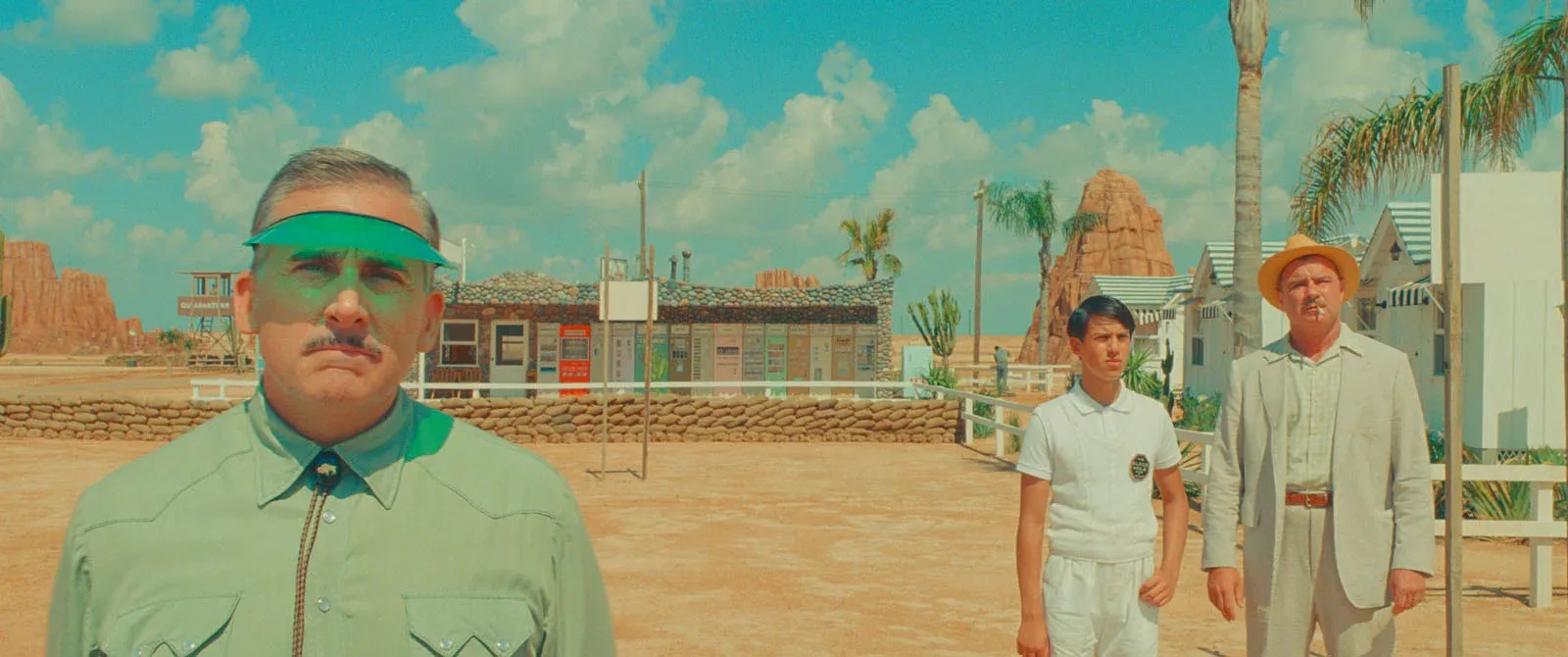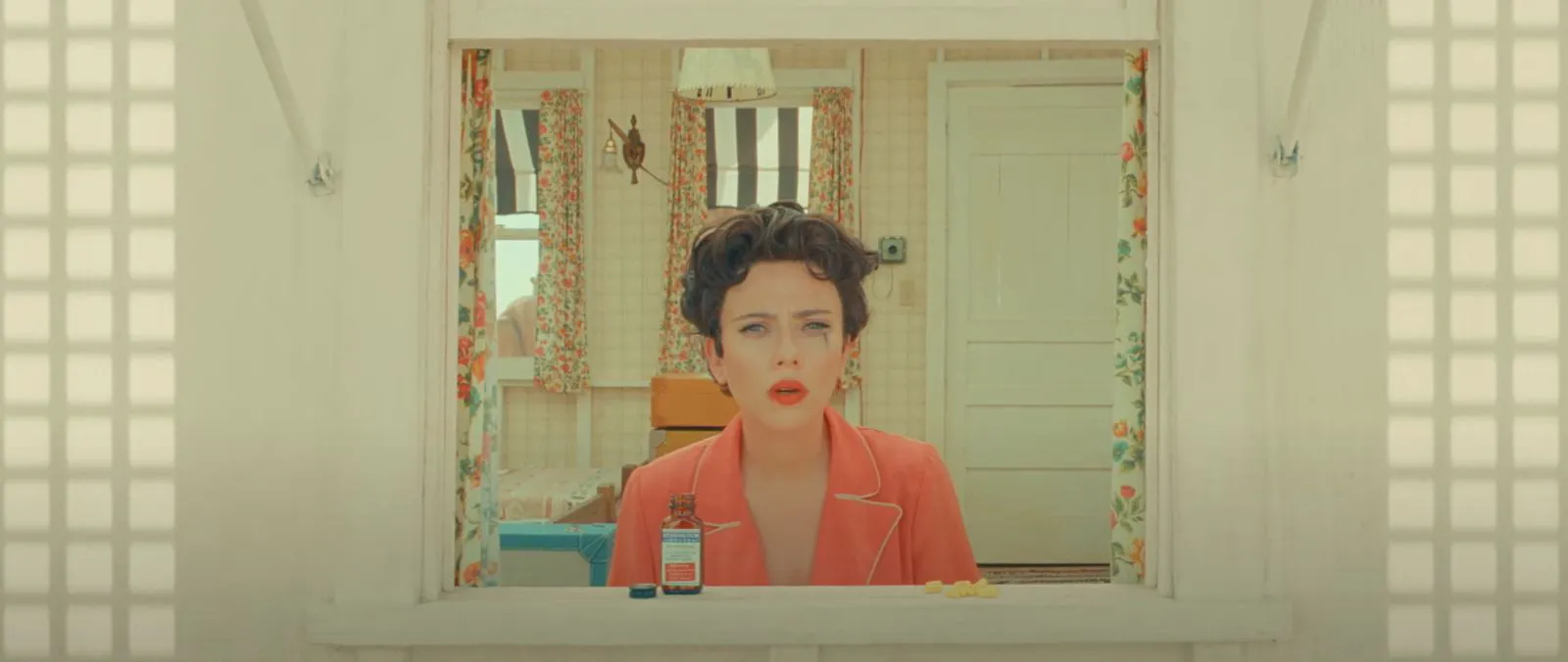Asteroid City: Wes Anderson’s Meditation on Loss and Connection
Wes Anderson’s “Asteroid City,” a film that playfully explores themes of grief, connection, and the search for meaning in a seemingly meaningless world, marks his third venture into the Cannes Film Festival. Following in the footsteps of “Moonrise Kingdom” and “The French Dispatch,” “Asteroid City” arrives with a weight of expectation, particularly after the divisive reception of his previous work. Some critics and viewers had grown weary of Anderson’s signature style, fearing that form had begun to overshadow substance. However, “Asteroid City” manages to surprise, offering a fresh perspective while retaining the director’s distinctive visual flair.

Jake Ryan in a still from “Asteroid City”
Like “The Grand Budapest Hotel,” “Asteroid City” employs a multi-layered narrative structure. A television host (Bryan Cranston), reminiscent of Rod Serling, introduces a play set in the titular desert town. As the monochrome world of the playwright (Edward Norton) and director (Adrien Brody) fades, we are transported to the ochre-toned landscape of Asteroid City in 1955. Here, a crater formed by a meteorite becomes a focal point for “Junior Stargazers” – bright, young inventors fascinated by the mysteries of the universe. The surrounding desert serves as a testing ground for atomic bombs and other government experiments. Caught between these creative and destructive forces are the personal sorrows of individuals quarantined both physically and emotionally.

Still from “Asteroid City”
One of the most striking aspects of “Asteroid City” is its deliberate lack of momentum and upbeat musical cues. The air hangs heavy with the midday heat, 1950s hits play softly from radios, and the main theme only surfaces during television interludes. Life in Asteroid City feels suspended, the languid atmosphere punctuated by conversations about UFOs, lectures from a professor (Tilda Swinton), and the slow-burn connection between war photographer Auggie Steenbeck (Jason Schwartzman) and actress Midge Campbell (Scarlett Johansson). Auggie, recently widowed, must inform his children – a space-obsessed son and three self-proclaimed witch-like daughters – about their mother’s death.

Steve Carell in a still from “Asteroid City”
Exploring Grief and Connection
Before “Asteroid City,” “The Darjeeling Limited” was perhaps Anderson’s most emotionally resonant film, following three brothers on a chaotic journey through India a year after their father’s death. Now, 16 years later, Anderson eschews rebirth and forward momentum, instead focusing on the stagnation of grief. In “Asteroid City,” even atomic bomb explosions are mere distractions from the waves of sorrow. Auggie suggests that atheists find solace not in heaven or hell, but in the belief that those who have passed remain among the stars.
Anderson’s Signature Style as Anesthesia
Anderson’s camera gracefully weaves through static figures, capturing miniature scenes in the background. Through subtle dialogue, smooth transitions, and close encounters, the director poignantly suggests that the most important connections are destined to end in loss, but that separation is less daunting if one chooses to believe in something more.

Scarlett Johansson as Midge in a still from “Asteroid City”
Conspiracy theories, government secrets, aliens, religion, logic, the mysteries of the universe, the fear of nuclear war – each character seeks their own remedy to numb the pain and find something meaningful beyond a desolate gas station in the middle of nowhere. As the film delves into meta-narrative layers, Anderson seems to confess that his own meticulously crafted worlds, the very play within the film, are also a form of anesthesia. “The Twilight Zone” represents not only extraterrestrial visitors and monsters in the dark, but also the gray area within, which can engulf even the sunniest town.
Finding Truth in Dreams
“You can’t wake up if you don’t fall asleep”: sometimes, we must close our eyes, embrace the dream, believe that the truth is out there, and retreat from reality. And then, eventually, return.